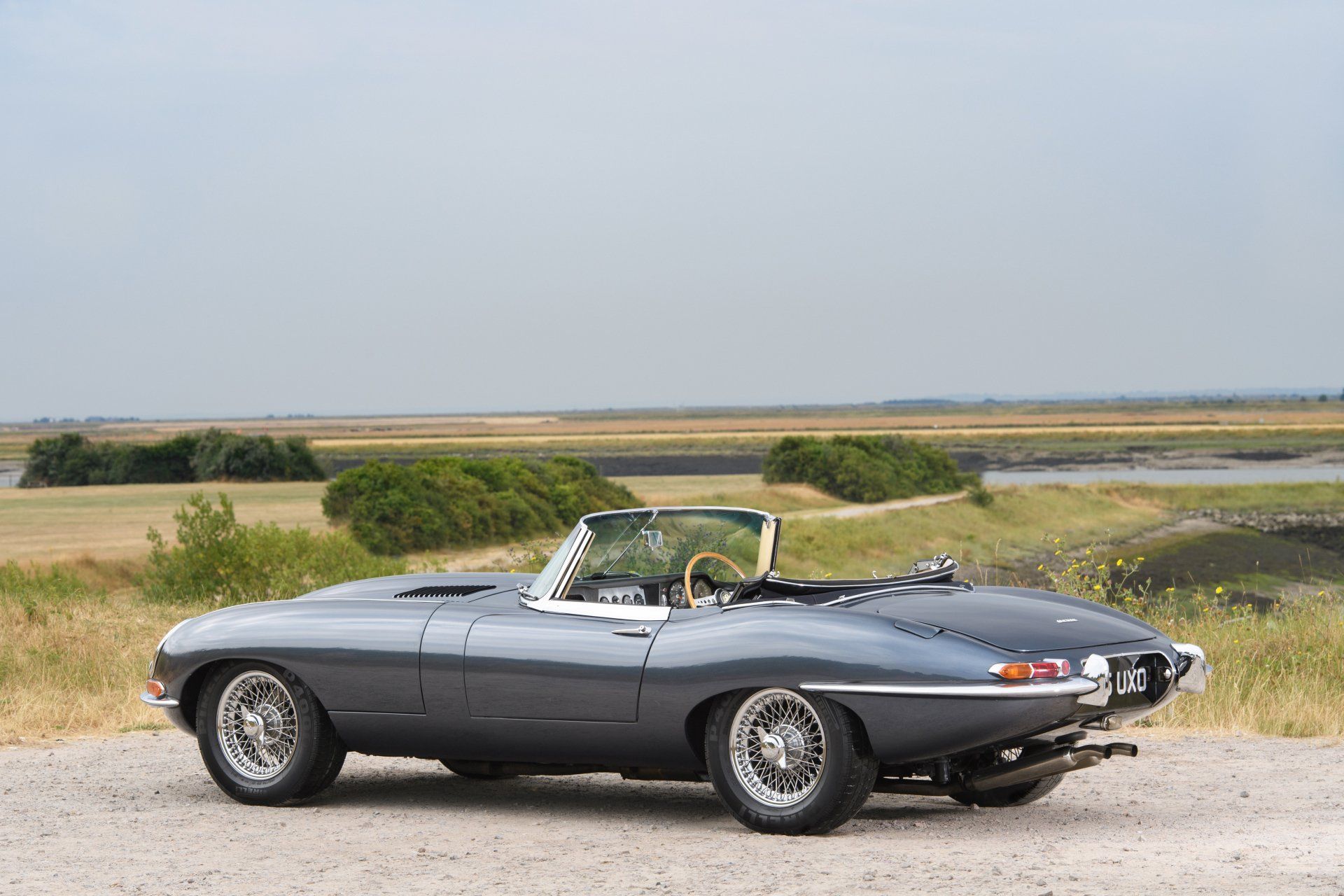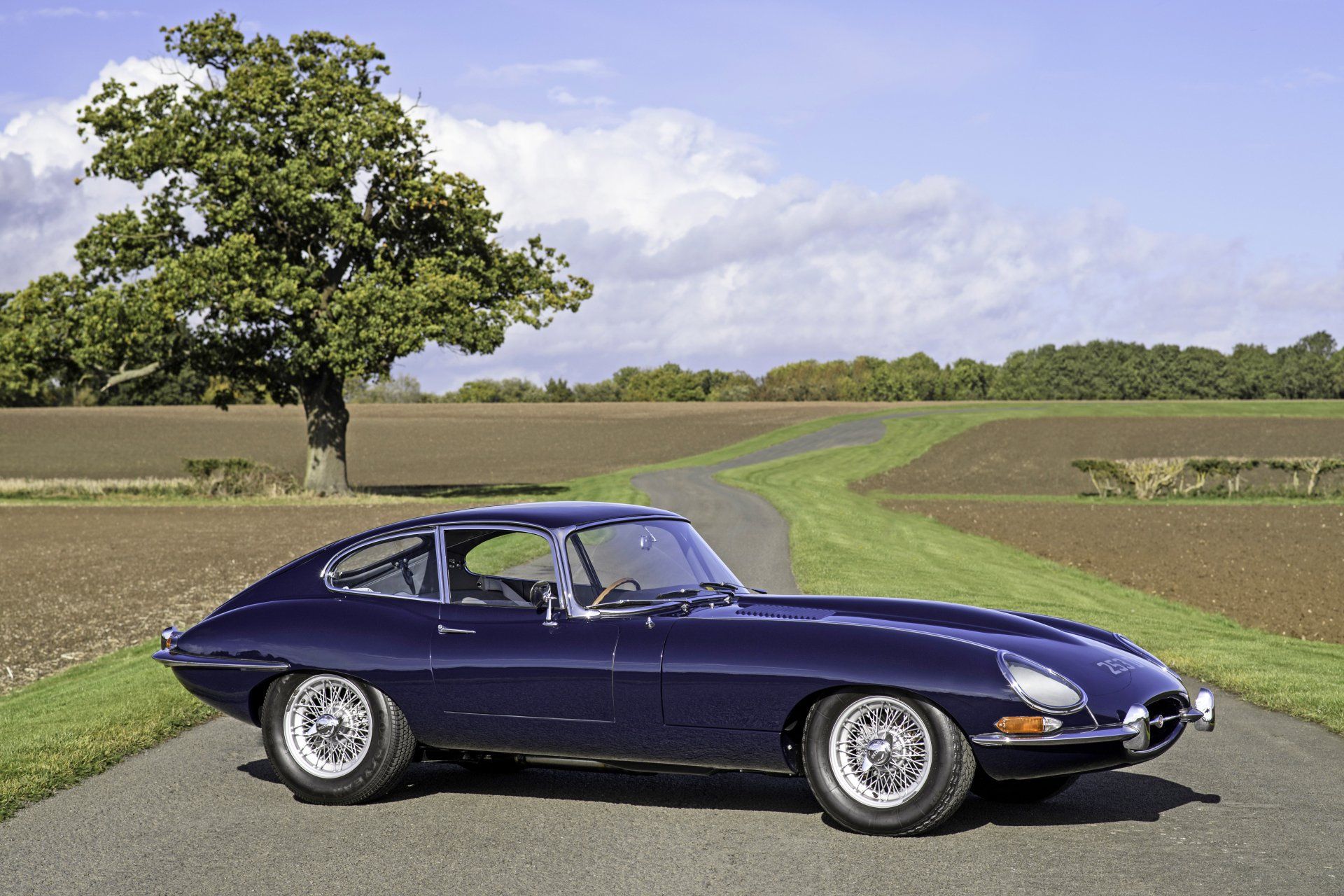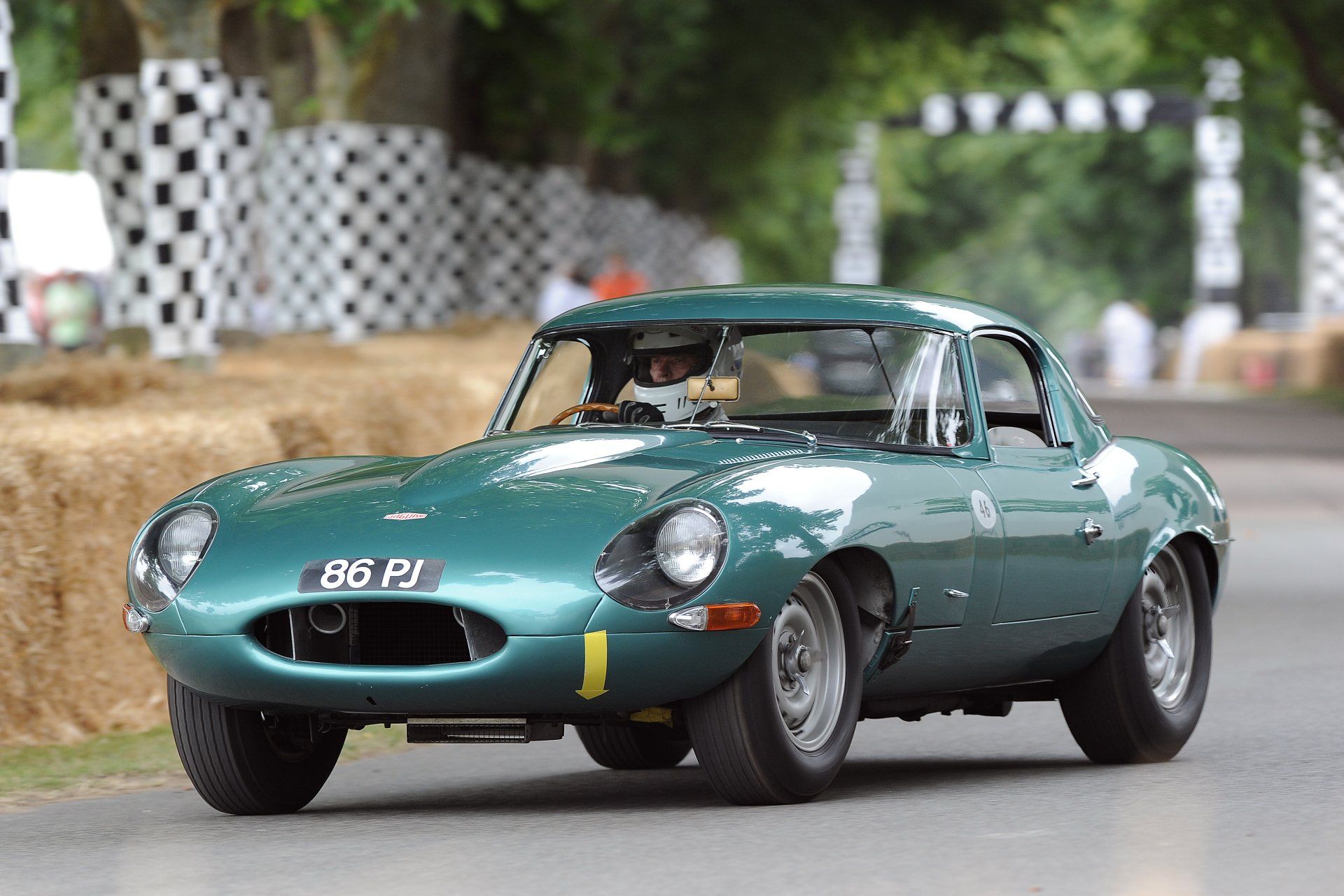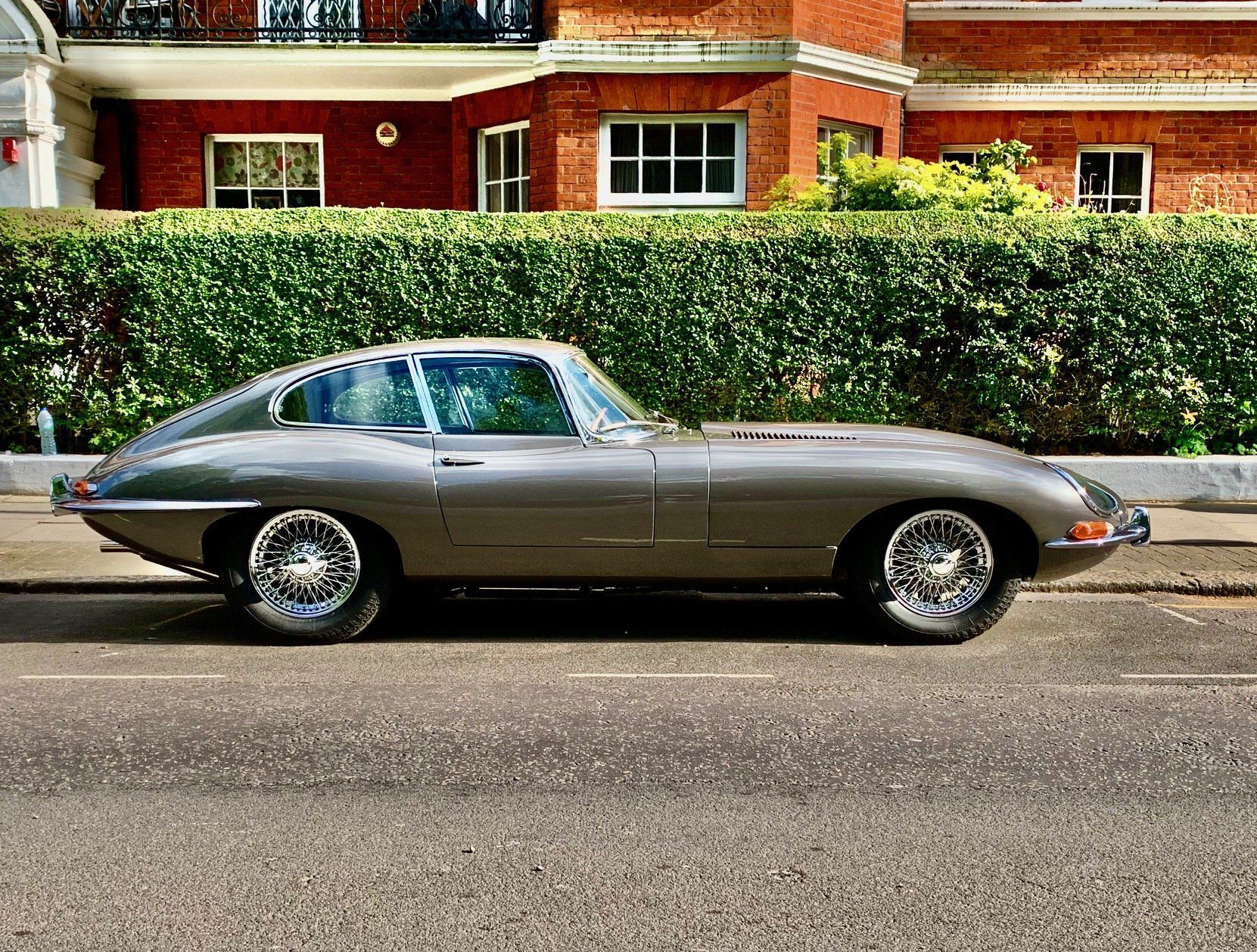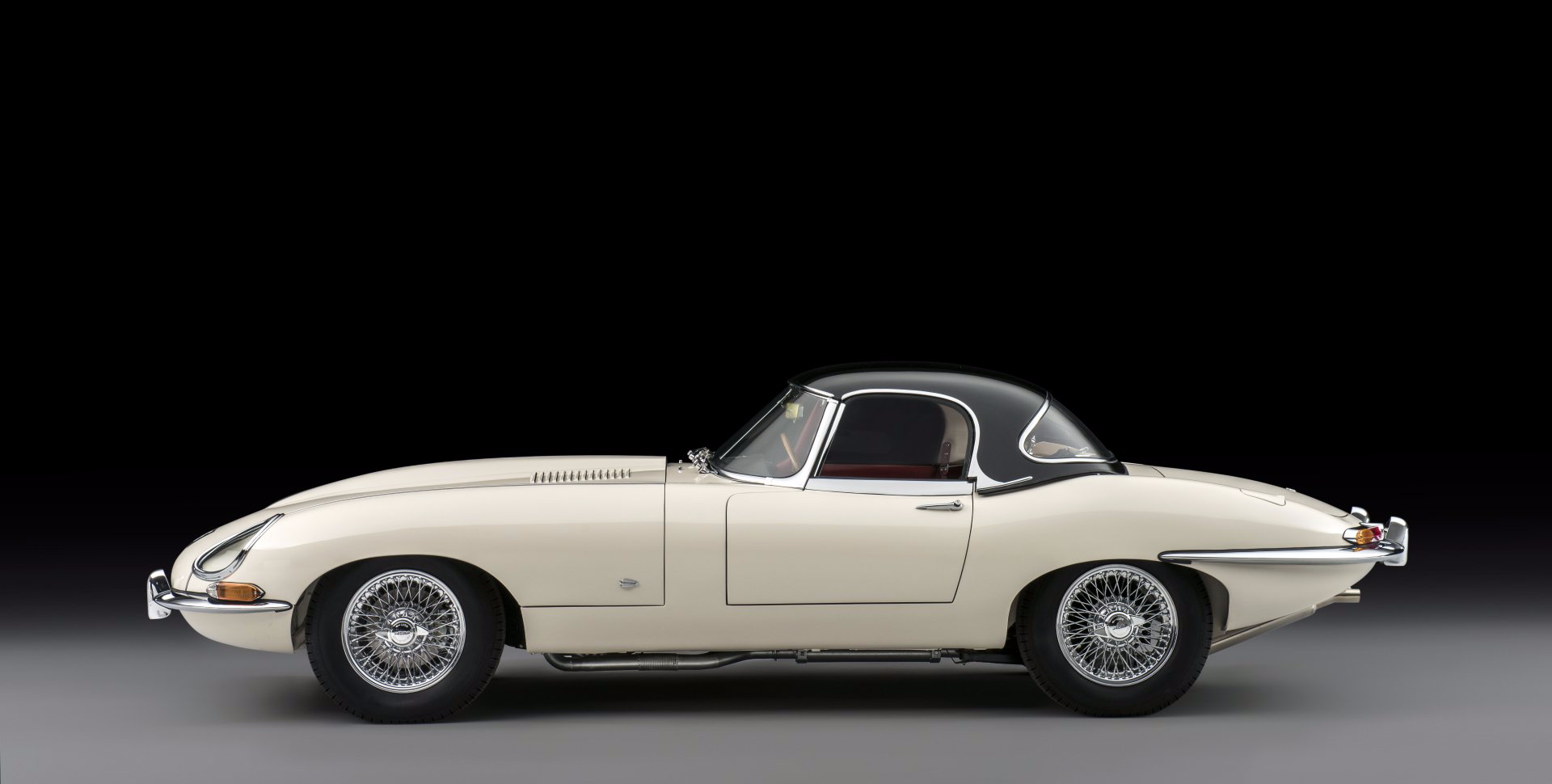
Slide title
Write your caption hereButton
-
What is it about the Jaguar E-Type that still resonates today? Is it that in its day it’s was referred to (in the ripe language of the era) as the “greatest crumpet catcher known to man?” Is it that Il Commendatore, Enzo Ferrari, himself called it” the most beautiful motor car in the world” (praise indeed from Ferrari)?
Is it because its inappropriately long, curvaceous bonnet, is often referred to as a cover for a lack of very personal gentlemanly pride? Is it the fact that it has become synonymous with Great Britain in the swinging sixties and conjures-up images of long hair, very short skirts, fab. music and liberated sex? Is it its blistering performance of 0-60 in under 7 seconds (that’s a good thing) and a top speed of 150mph? Or is it the fact that it has been voted the sexiest motor car of all time on countless occasions? It’s beginning to sound like the E-Type itself is the “crumpet”!
Sixty years ago, on March 15th, 1961, the all-new Jaguar E-Type was launched to the public at the Geneva Motor Show. Never had any motor car before, and possibly since, created such a WOW factor! The order book was immediately filled and only celebrities and racing drivers could get their hands on one. Jaguar’s E-Type was developed as a production road car following Jaguar’s extraordinary achievements on the racetrack, in particular the 24 Hours of Le Mans where Jaguar C-Types and then D-Types won outright victory no fewer than 5 times during the 1950s. The E-type has a pedigree like few others. More importantly, at its launch it was positioned on the market as a relatively affordable, production sportscar that was less than half the price of an Aston Martin or one third of the price of a Ferrari. A Jaguar E-Type could have been yours for £1550 in 1961, assuming you didn’t mind joining the long waiting list.
Jaguar Chief, Sir William Lyons, was a businessman first and foremost whereas Enzo Ferrari was perhaps more a sportsman. Enzo Ferrari only sold his motor cars to the public in order to fund his highly successful racing endeavours, whilst Lyons only went racing in order to promote the quality and reliability of his road destined motor cars. However, the E-Type took onboard many of the developments and lessons learned on the racetrack and was an evolution the D-Type racer and the E-Type prototypes E1A & E2A. Jaguar’s chief designer, the unassuming Malcolm Sayer, was an aircraft engineer and aerodynamicist and had learned his craft working for the Bristol Aeroplane Company during the war. It is not hard to see the influence of aerodynamics and the wind on the E-Type’s sensational shape. The E-Type was originally conceived as a Roadster, or open-two-seater and it was William Lyons himself who envisaged the closed Coupe version. Reportedly Lyons was in the workshop looking at the roadster taking shape when he picked-up some long tubing from the floor, draped it from the top of the windscreen to the rear of the car, stood back and said, let’s build that. Many today, including myself, feel that the early Coupe is the most beautiful of all E-Types but there will always be something special about top-down, wind-in-the hair motoring on English Country lanes or Californian highways.
During its 13-year production run the E-Type was built in three distinct Series. Some insist the first Series, being the first of the breed, is the purest and therefore best. During production of the first Series the original six-cylinder engine was enlarged from 3.8 litre to 4.2 litre and the gearbox improved with syncromesh now on all forward gears. Over the following years the E-Type evolved from a pretty raw sports car with obvious links to its predecessor, the racing D-Type, into a more comfortable, yet still extremely sporting grand tourer. The biggest change came in 1971 when the trusty, powerful and robust 6-cylinder, twin cam XK motor was replaced by an all-new and highly sophisticated 5.3 litre V12 motor. The new Series 3 E-Type was also longer, had flared wheel arches and a new chrome grille. Safety legislation, mainly from the USA, Jaguar’s biggest market, began to take its toll on the purity of the original design as did the fuel crisis on sales. Interestingly, during the classic car boom of the late 1980s, it was the V12, Series 3 E-Type that was most highly prized, yet today collectors covet the very early examples. Jaguar ended E-Type production in 1974 with the launch of 50 Commemorative editions.
The irony of the E-Type’s success is that today, beautiful and highly sought after as they are, in value terms they are nowhere even close to the $60m plus it would take to acquire the most highly prized of all collector’s motor cars, the Ferrari 250 GTO. Just 36 examples were built to race under the rules of the day whereas Jaguar built over 70,000 E-Types in 3 Series over a 13-year production run. The million-dollar question is, had the E-type been built in such extremely low numbers what it’s value might be today, or, conversely, what might a 250 GTO be worth today had Ferrari made 20,000 of them? Prices for road-going production E-Types range between £50,000 - £350,000 depending on model, condition and provenance. Racing variants and extremely special examples are worth considerably more. Legend has it that Cubby Broccoli, James Bond producer, originally approached William Lyons to use the E Type as 007’s steed but Lyons declined saying that they, Jaguar, had no need for the extra publicity. The Aston Martin DB5 is now the most famous motor car in the world – next to Chitty Chitty Bang Bang of course!
I’ve now owned my E-Type, a 1961 gunmetal grey Fixed Head Coupe for more than 30 years. As far back as I can remember I have always loved E-Types from the first time my father jealously pointed one out to me on the streets of London when I was growing-up. For many years my E-Type was my only car and together we have made several trips to the South of France and I used it as my daily driver when I was living in Milan. In Italy I would visit clients and they would cheerfully refer to it as “la macchina di Diabolik” (Diabolik is a stylish, all black wearing secret agent in a popular Italian comic book and he drives a black E-Type FHC.) Even now, when I open my garage, I stop to wistfully admire my E-Type. When I open the door of this fine machine, shut it behind me, I anticipate that satisfying, solid clunk, knowing that the time, effort and money spent on perfecting the restoration has been worth it. From the outside, I know that onlookers will admiring her. Once I sink into the driving seat, the butter-soft leather wraps me as a glove. My senses reverse into memories of scenic drives and romantic trysts (in contrast to most drives which are usually just a pain). The perfume of the leather, petrol and oil; the grip of the slender, wood-rimmed steering wheel; the palm-grip of the gear-knob; the instrument cluster in calibrated eyeline with high-relief dials as well-formed as an exquisitely engineered time-piece — all betoken beauty and fond memories.
Insert the ignition key and turn, drink in the soft clicks of the fuel pump filling the finely tuned carburettors, press the starter with a childlike anticipation, hoping the battery has roused itself in willing mood. The starter clicks. It engages. The carbs squirt their juice, the ignition coil sends its shocks and the 6 primed cylinders burst into song, first time. The back wall of the garage is marked by the exhaust in morning musk. The elements of this confabulation all go to answer our need for nervous anticipation, our lust for excitement and the unexpected, our hunger for beauty in life. And we haven’t left the garage. Out on the road our senses come alive to the fruity burble or shrill scream of the tightly tuned exhaust system. In the rain (yes, some dare), the flack, flack, flack of wipers thrum back and forth, metronome tempoing with our admiring of the curvaceous bonnet, its pert bulges. Rounding a corner, the soft green light, tick, tick, tick, indicates indicators indicating intentions. Troubles left behind. Savings too.
Classic car ownership is a joy, sure, it’s sometimes troublesome, but stepping back and enjoying the E-Type’s sensuous curves and perfect proportions soon raises the pulse and all is forgiven.
“We appreciate beautiful things not for their utility only, but also for what they are in themselves — or more plausibly, for how they appear in themselves.” ― Roger Scruton, Beauty: A Very Short Introduction
PHOTOS: TIM SCOTT, FLUID IMAGES
So what is it about the E-type that makes it so special? Sex appeal, pure sex appeal - we can still have sex drive at 60, can’t we?
MOTOR CARS & MOTOR BOATS CURRENTLY AVAILABLE
Please contact me for further information or to discuss the TYPE of motor car or motor boat that you are thinking of selling.
MOTOR CARS & MOTOR BOATS COMING SOON
Rolls Royce Phantom III
1961 Riva Ariston





